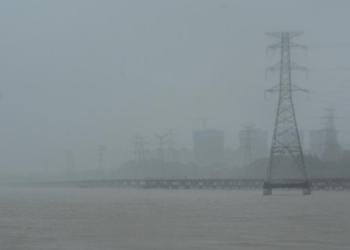The ongoing discussions on the Israeli military objectives in Gaza are largely focused on whether Israel is planning a long or a short-term military reoccupation of the Strip.
Israelis themselves are fueling this conversation, with 41 percent of Israelis wanting to leave Gaza following the war and another 44 percent wanting the Gaza Strip to remain under Israeli control.
These numbers, revealed in an Israeli public opinion poll conducted by the Lazar Institute and published by Maariv on Friday, November 10, reflect real confusion regarding the legal status of Gaza, even in the minds of Israelis themselves.
In truth, Israel was – and remains – the Occupying Power in Gaza and the rest of Palestine, despite the ‘redeployment’ scheme from the small and impoverished region in September 2005.
Back then, Israelis convinced themselves that they are no longer the occupiers of the Strip and, therefore, are no longer responsible for it, in accordance with international law, particularly the Fourth Geneva Convention.
But they are wrong, even if on September 21, 2005, the last day of the redeployment, Tel Aviv declared Gaza a “foreign territory”. Almost exactly two years later, this supposed “foreign territory” was declared a “hostile territory”, thus subjected to the ire of the Israeli military, should it not respect Israeli sovereignty and pose a threat to Israel’s southern borders.
International law, however, is not beholden to Israeli definitions. The United Nations has repeatedly issued statements insisting that Gaza remains an Occupied Territory.
Moreover, the fences and walls separating Gaza from Israel are not internationally-defined border regions, as designated by the armistice agreement established in 1949 between Israel, Egypt and other Arab countries – following the ethnic cleansing of Palestine in 1948.
So, the heated Israeli discussions on occupying or not occupying Gaza after the war are moot; Gaza has never been freed to be reoccupied.
Whether Israel accepts this obvious logic or not, it matters little, since it is the international legal institutions, namely the UN, the ICJ and others, that have the authority and responsibility to reach and enforce such conclusions.
Still, however, Israel needs to be reminded of a few urgent matters.
One, resuming the siege on Gaza as usual will not resolve Israel’s problems. After all, it was the hermetic siege – where Palestinians were “put on a diet” but not allowed to die, according to senior Israeli government advisor Dov Weisglass in 2006 – which provided the main rationale behind Gaza’s need to resist.
Two, it was that very resistance that forced Israel to redeploy from populated areas in Gaza in the first place, leading to the draconian siege which has been in place for nearly 17 years.
These dates and events are often overlooked by mainstream media because they create an unnecessary inconvenience to the Israeli narrative regarding the war.
In Western media, for example, it is commonplace to highlight September 2005 – though here ‘redeployment’ is perceived as ‘withdrawal’ – and October 7, the Hamas attack on southern Israel, as the most significant dates and events deserving attention. While the first is used to exonerate Israel, the latter is used to implicate Palestinians.
But Palestinians, and anyone interested in the true context of this war, should not feel bound to this logic.
Moreover, we should remember that the majority of Palestinians in Gaza are descendants of Palestinian refugees who were expelled from their homes and villages in 1948. They, rightly, continue to see themselves as refugees entitled to the Right of Return, as enshrined in UN Resolution 194.
Another date worth remembering is June 1967, where Israel occupied whatever remained of historic Palestine – East Jerusalem, the West Bank and Gaza.
This event is critical, as it represented an earth-shattering historical shift in Israel’s relationship with Palestinians, who became both victims of Israeli settler colonialism and also military occupation.
The Israeli military occupation ushered in a new form of popular resistance in Palestine, where ordinary, oppressed Palestinians confronted Israeli soldiers daily.
The tools of that resistance, from 1967 until 2005, largely relied on civil disobedience, popular strikes, mass protests and rock-throwing. Yet, that was still enough for the Israeli military to be chased out of Gaza, thus ending the everyday policing of the Strip in exchange for a new stage of military occupation.
On the last day of the Israeli redeployment, tens of thousands of Palestinians took to the streets in central Gaza soon after midnight to confront Israeli soldiers as they evacuated the last military base, east of the Bureij area.
Without prior coordination, the Gaza youth wanted to send a message to the Israeli army that they were not welcome inside Gaza, not even in the last hours of redeployment.
Israelis should reflect on this history.
They should also recall that the Israeli rush to escape Gaza – under the leadership of a notorious military General, then Prime Minister Ariel Sharon – took place when Palestinians had no army and a few arms. Their armed resistance consisted mostly of poorly organized militias, backed by the fury of hundreds of thousands of fed
-up, occupied and oppressed Palestinians.
If Israel returns to Gaza to stay, the challenge of governing the rebellious Strip will be much more difficult. Gaza’s population has increased exponentially since 2005. Moreover, the weakest of Gaza’s fighting groups commands thousands of men, ready to fight and die to keep the Israelis out.
Even more important, is that Israel has failed to govern one Gaza, though tried for nearly four decades. If it foolishly decided to return, it would have to contend with two Gazas – a defiant and empowered population above ground, and tens of thousands of fighters below.
The truth is Israel has no military option in Gaza, and those who support whatever military strategy Tel Aviv has in mind, are equally deluding themselves.
The only solution to Gaza is the same solution to the rest of occupied Palestine – a clear understanding that the real problem is not ‘Palestinian terrorism’ or militancy, but the Israeli military occupation, apartheid and unrelenting siege.
If Israel does not end its illegal actions in Palestine, leading to the freedom, equality and justice for the Palestinian people, resistance, in all of its forms, will continue unabated.




















